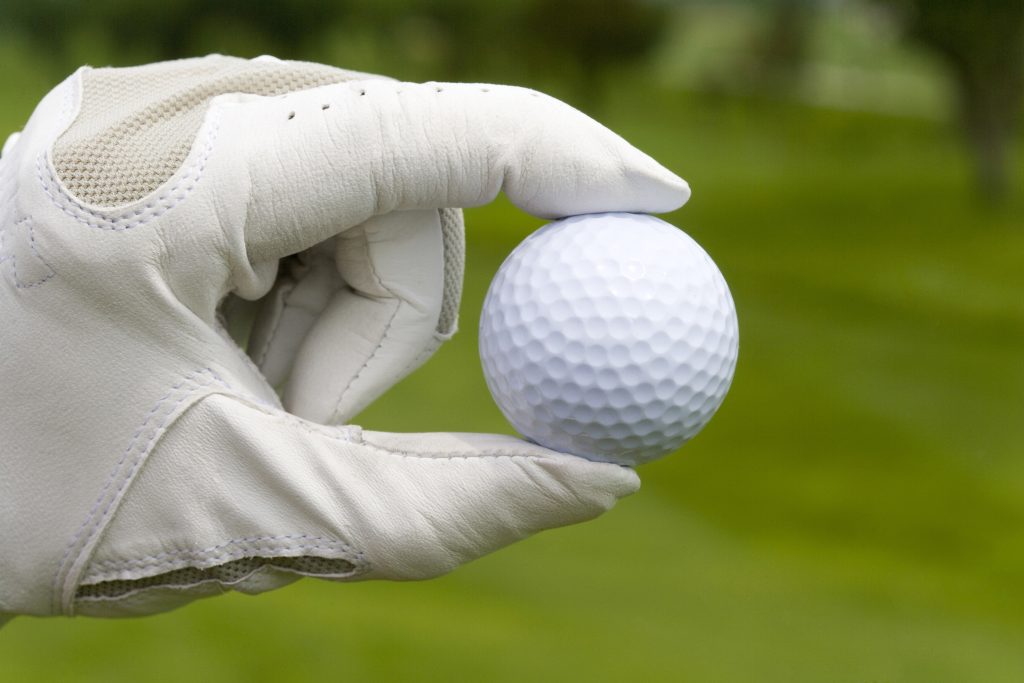Do you have any idea? How many dimples are on a golf balls? Golf balls are more than minor, dimpled spheres that golfers hit across courses. They’re a fascinating combination of design, physics, and technology. But have you ever wondered how many dimples cover the surface of a golf ball? In this article, we’ll delve into this intriguing question, exploring the science behind golf ball dimples and uncovering the mystery of their numbers.
What are Dimples on a Golf Ball?

Dimples are small indentations on a golf ball’s surface. They give the ball its distinctive texture, resembling a tiny, pebbled surface. Without these dimples, a golf ball would be smooth, much like a ping-pong ball.
How Many Dimples Are On A Golf Balls Remarkably ?
The number of dimples on a golf ball can vary depending on the specific model and brand. A modern golf ball typically has around 300 to 500 dimples covering its surface. These dimples play a crucial role in the ball’s aerodynamics, helping to reduce drag and increase lift as it travels through the air.
The precise arrangement and pattern of the dimples are carefully engineered to optimize the ball’s flight characteristics, including its trajectory, distance, and spin control.
Golf ball manufacturers conduct extensive research and testing to determine the ideal dimple configuration for each ball design, ensuring that golfers can achieve maximum performance and consistency on the course.
The Purpose of Dimples
Have you ever wondered why golf balls have dimples? These tiny craters aren’t just for aesthetics; they are crucial in how the ball flies through the air. Dimples help reduce aerodynamic drag, allowing the ball to travel farther with more accuracy.
Evolution of Golf Ball Dimples
Golf ball dimples have come a long way since the first balls were made from wood. Early golfers noticed old, beaten-up balls travelled further than new, smooth ones. This observation led to the development of dimpled golf balls, revolutionizing the game.
How Many Dimples Does a Golf Ball Have?
A golf ball’s dimple count might change depending on the brand and model. On average, most golf balls have between 300 and 500 dimples. However, some high-performance balls may have over 1000 dimples for enhanced aerodynamics.

Dimple Patterns: Is There a Standard?
While there’s no standard pattern for golf ball dimples, manufacturers carefully design their placement and arrangement. These patterns can affect how air flows around the ball, influencing its flight path and distance.
Measuring Dimples: A Technical Task
Counting dimples on a golf ball may sound simple, but it’s a precise and technical process. Manufacturers use specialized equipment to measure dimple count and ensure consistency across their product lines.

The Impact of Dimple Count on Performance
The number and arrangement of dimples can significantly impact a golf ball’s performance. Balls with more dimples tend to have lower drag and travel farther, while those with fewer dimples may provide better control and spin.
Fun Facts About Golf Ball Dimples
- Dimple Depth: Dimples aren’t just about quantity; their depth also plays a role in aerodynamics.
- Regulations: Golf’s governing bodies have strict dimple size, depth, and symmetry rules.
- Experimental Designs: Some manufacturers experiment with unconventional dimple patterns to push the boundaries of performance.

Golf ball dimple pattern
The dimple pattern on a golf ball is not just a random arrangement of tiny craters; it’s a carefully designed feature that affects the ball’s aerodynamics and performance.
Manufacturers invest significant time and resources into optimizing dimple patterns through extensive testing and computer simulations. These patterns influence how air flows around the ball during flight, reducing drag and maximizing distance.
While there’s no standard dimple pattern, each design aims to balance lift, spin, and stability to enhance the golfer’s game. So, the next time you inspect the dimples on your golf ball, remember that they’re more than just aesthetics—they’re a crucial element of its performance.
FAQ: How are Dimple Patterns Decided?
Dimple patterns are determined through extensive testing and computer simulations, aiming to optimize aerodynamic performance.
FAQ: Do Different Golf Balls Have Different Dimple Counts?
Different golf balls, such as distance and spin balls, may have varying dimple counts to suit their intended use.
FAQ: Can I Increase the Dimple Count for Better Performance?
While altering dimple count may theoretically affect performance, it’s not recommended for amateur golfers, as it could lead to unintended consequences.
FAQ: How Do Dimples Affect Aerodynamics?
Dimples create a thin layer of turbulent air around the ball, reducing drag and allowing it to fly farther and straighter.
FAQ: Are There Golf Balls with No Dimples?
While dimples are standard on most golf balls, some novelty balls and training aids may feature a smooth surface for specialized purposes.
In conclusion, the number of dimples on a golf ball is more than just a trivial detail; it’s a critical factor in how the ball performs on the course. From reducing drag to optimizing flight trajectory, dimples play a vital role in golf. Take a moment to understand the science underlying those small craters on your golf ball the next time you tee off.
I am a sports-specialized writer and blogger based in the USA, UK, Canada, and Australia. I have four years of experience in sports and all types of categories. So, I am working on solving these issues and will give you various tips.
